
Synthesis of various sources on rhetoric
- Subject:
- English Language Arts
- Material Type:
- Lecture
- Date Added:
- 02/24/2017

Synthesis of various sources on rhetoric
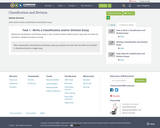
Learn how to write a classification and division essay
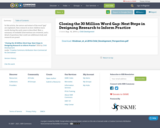
In this article, the nature and extent of the word "gap" are explained, then research on how children learn words during the early years is described. Next, a summary of available interventions are reviewed, and a detail of questions that could use additional study and research are posed.

Integrated grammar and composition for upper-level ESOL students of writing
Short Description:
This courses presents grammar and composition skills for upper-level ESOL students using the social justice themes of the Universal Declaration of Human Rights.
Long Description:
This courses presents grammar and composition skills for upper-level ESOL students using the social justice themes of the Universal Declaration of Human Rights. The course addresses specifically definition, cause-and-effect, and discussion essays using a paragraph-to-essay writing process.
Word Count: 44018
(Note: This resource's metadata has been created automatically by reformatting and/or combining the information that the author initially provided as part of a bulk import process.)

Warm Up Activities for the Creative Writing Classroom
Word Count: 13530
(Note: This resource's metadata has been created automatically by reformatting and/or combining the information that the author initially provided as part of a bulk import process.)
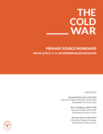
This workshop includes historical context, digitized primary sources, and follow-up discussion questions. Students are asked to make arguments for and against providing funding to programs and projects proposed to the Commonwealth Fund, the Rockefeller Foundation, and the Ford Foundation. Taking on the role of program officers during the Cold War and working in small groups, students will read primary sources and articulate why a foundation should or should not provide funding to these proposed ideas. As a whole group, the studentswill participate in a debate as to which of the proposed ideas would be the most effective tool for furthering American Cold War interests. Students are encouraged to use this workshop as a springboard for further research into the role foundations played during the Cold War.

The work plan outlined here is intended to facilitate a 4-hour session for a collaborative work group of subject matter experts. This group's mission is to develop course learning outcomes that blend collaborators’ course learning outcomes into one set of outcomes. Our objective is to craft a course module template aligned with the new course learning outcomes that is versatile enough to be adopted by multiple institutions across the globe.
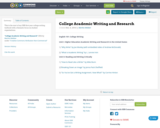
This is the start of my OER first year college writing textbook with a thematic focus on student organizations.

Word Count: 12935
(Note: This resource's metadata has been created automatically by reformatting and/or combining the information that the author initially provided as part of a bulk import process.)

Word Count: 23874
(Note: This resource's metadata has been created automatically by reformatting and/or combining the information that the author initially provided as part of a bulk import process.)
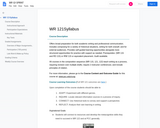
This syllabus relies on three openly licensed textbooks:
Gagich, Melanie and Emilie Zickel. A Guide to Rhetoric, Genre, and Success in First-Year Writing.
Priebe, Sybil, Dana Anderson, and Robin Marman. Writing Unleashed.
Wangler, Sarah and Tina Ulrich, editors. 88 Open Essays: A Reader for Students of Composition and Literature.
Course Description
Offers broad preparation for both academic writing and professional communication. Includes composing for a variety of rhetorical situations, writing for both oneself, and for external audiences. Provides self-guided learning opportunities alongside more structured opportunities for practice with support as needed.
Intended Outcomes for the course
Upon completion of the course students should be able to:
ADAPT: Experiment with different genres.
INQUIRE: Locate relevant information sources in a process of inquiry.
CONNECT: Use rhetorical tools to convey and support a perspective.
REFLECT: Analyze their own learning in writing.
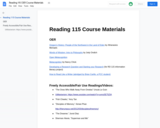
College Reading OER Course Materials
RD 155
Course Description
Focuses on expanding reading frequency and effectively reading complex college level texts; Emphasizes comprehension strategies, critical reading and thinking skills, information literacy, vocabulary development, student success strategies and adapting reading rate to different reading tasks.
Improve reading rate, vocabulary and comprehension. Includes formation of efficient
reading habits, vocabulary development, inferential and critical reading, and adapting
reading rate to different reading tasks.
Intended Outcomes for the course
1. Proficiently use stages of reading—previewing, reading, review-and reading strategies in order to improve comprehension, control concentration, and increase persistence and retention in a variety of academic and non-academic reading tasks. Refine connections between text, the student’s life, student’s knowledge of the world, and other texts. Examine interactions between relationship, richness, structure, style, vocabulary, and purpose within complex texts. Increase reading frequency. Adjust reading rate to the nature of the material.
2. Advance and broaden use of vocabulary development strategies to learn and use new words including discipline-specific vocabulary in listening, speaking and writing. Advance word parts study.
3. Refine written evaluation, analysis, and reflection in response to various texts.
4. Analyze texts in order to identify and articulate explicit and implied main idea and major details, distinguish fact from opinion, determine the author’s and reader’s purpose and bias, and distinguish between literal and figurative meaning in a variety of increasingly complex academic and non-academic reading materials. Make accurate inferences and rely on information provided in text to substantiate thinking. Identify and evaluate complex points of view in different texts. Cultivate flexibility and skepticism about author’s and reader’s perspectives.
5. Use library resources to formulate a research query and select appropriate sources of information. Use critical thinking to evaluate increasingly complex and diverse information and sources for academic and lifelong learning. Identify and make use of steps in the research process.
6. Exhibit habits and contribute to academic success, including engagement and intellectual curiosity. Employ active learning and study strategies for academic success. Use campus support services and other learning resources to help meet academic goals. Participate in a classroom learning community in a respective and responsive manner.
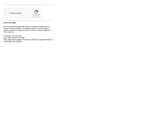
College Reading Syllabus
RD 115 College Reading
Course Description
Focuses on expanding reading frequency and effectively reading complex college level texts; Emphasizes comprehension strategies, critical reading and thinking skills, information literacy, vocabulary development, student success strategies and adapting reading rate to different reading tasks.
Improve reading rate, vocabulary and comprehension. Includes formation of efficient
reading habits, vocabulary development, inferential and critical reading, and adapting
reading rate to different reading tasks.
Course Outcomes
*NOTE THIS COURSE HAS SIX OUTCOMES, MOST OF WHICH HAVE MULTIPLE PARTS. THEY ARE BROKEN DOWN INTO
SMALLER MEASURABLE AREAS BELOW.
1a. Proficiently use stages of reading—previewing, reading, review-and reading strategies in order to
improve comprehension, control concentration, and increase persistence and retention in a variety of
academic and non-academic reading tasks.
1b. Refine connections between text, the student’s life, student’s knowledge of the world, and other texts.
1c. Examine interactions between relationship, richness, structure, style, vocabulary, and purpose within
complex texts.
1d. Increase reading frequency.
1e. Adjust reading rate to the nature of the material.
2a. Advance and broaden use of vocabulary development strategies to learn and use new words including
discipline-specific vocabulary in listening, speaking and writing.
2b. Advance word parts study.
3. Refine written evaluation, analysis, and reflection in response to various texts.
4. Analyze texts in order to:
a. identify and articulate explicit and implied main idea and major details,
b. distinguish fact from opinion
c. determine the author’s and reader’s purpose and bias, and
d. distinguish between literal and figurative meaning in a variety of increasingly complex academic
and non-academic reading materials.
e. Make accurate inferences and rely on information provided in text to substantiate thinking.
4f. Identify and evaluate complex points of view in different texts.
4g. Cultivate flexibility and skepticism about author’s and reader’s perspectives.
5a. Use library resources to formulate a research query
5b. Select appropriate sources of information. Use critical thinking to evaluate increasingly complex and
diverse information and sources for academic and lifelong learning.
5c. Identify and make use of steps in the research process.
6a. Exhibit habits and contribute to academic success, including engagement and intellectual curiosity.
6b. Employ active learning and study strategies for academic success.
6c. Use campus support services and other learning resources to help meet academic goals.
6d. Participate in a classroom learning community in a respective and responsive manner
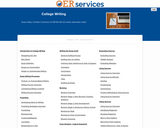
Textbook for introductory composition, focusing on writing processes, essay writing, and research writing.
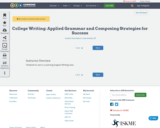
Textbook to use in a Learning Support Writing class.
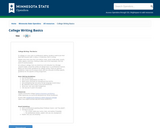
This is a resource to give to students about expectations for college writing, including links and resources for writing papers, emails, and more in an academic and professional manner.
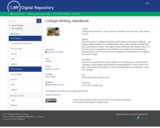
Abstract
This PDF focuses on college-level writing, critical reading, and research challenges. This College Writing Handbook is a modified version of the Guide to Writing by Vallerie Mott and a writer listed as "Alexis." The original version of this book was released under a CC-BY license and is copyright by Lumen Learning. The changes to this book listed are released under a CC-BY-SA license and are copyright by Joshua Dickinson of Jefferson Community College.
Description
This all-in-one handbook has several chapters on the writing process. Also featured is coverage of critical reading, logical fallacies, avoiding plagiarism, citing in APA or MLA style, writing across the disciplines, as well as the typical grammar, punctuation, usage, ESL coverage.
URI
http://hdl.handle.net/1951/71295
Subjects
College Writing, Research, Usage, Grammar, Handbook, APA Style, MLA Style, Writing Process

An Open Source Textbook for Students Enrolled in ELL 80 at Lake Washington Institute of Technology
Short Description:
Several English pronunciation lessons to make you a more effective speaker.
Word Count: 3006
(Note: This resource's metadata has been created automatically by reformatting and/or combining the information that the author initially provided as part of a bulk import process.)
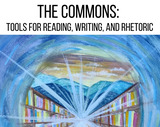
The Commons: Tools for Reading, Writing, and Rhetoric gives instructors and students of college writing courses a single source for information on metacognitive critical reading, rhetorical awareness, and MLA formatting basics as well as interesting and relevant reading and viewing content. Its approach is interdisciplinary, bringing in material from ecology, sociology, psychology, technology, popular culture, political science, cultural studies, and literature. Each essay, website, video, infographic, and poem has been carefully chosen to speak to the Eastern Kentucky University community, but everyone can find something that speaks to our common human experience and our need to communicate and connect with one another.

Short Description:
This open textbook is designed to guide college students in developing the vital communication skills that are necessary to succeed in the modern workplace.
Word Count: 76959
ISBN: 978-0-9699813-3-6
(Note: This resource's metadata has been created automatically by reformatting and/or combining the information that the author initially provided as part of a bulk import process.)